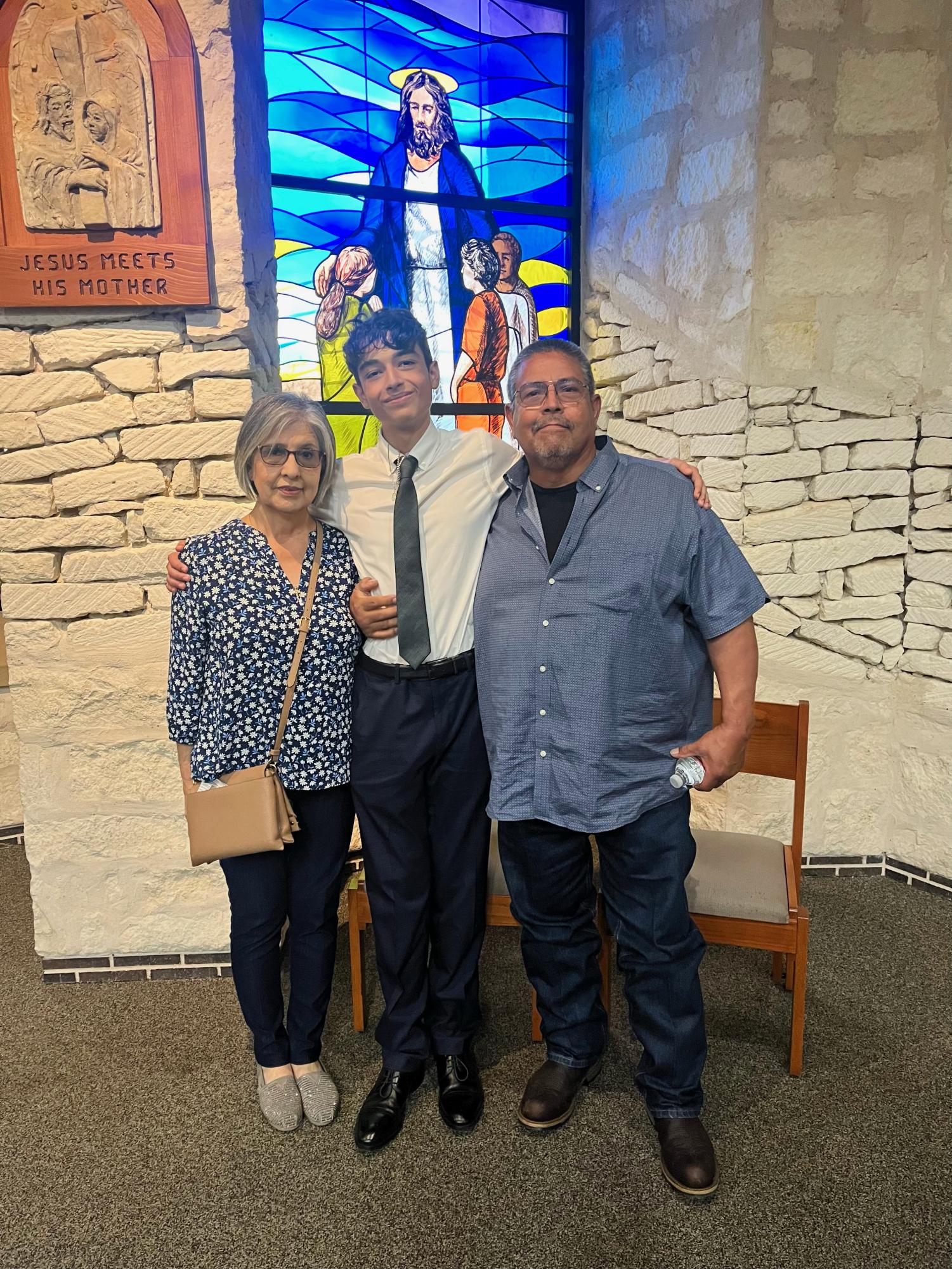While with my relatives in Pecos, Texas, the scent of freshly-cooked pork tamales comes from the kitchen table. Everyone is speaking in a language foreign to me. Despite that, I feel close to my Mexican culture at these times, but the moment I’m brought back to Austin, it all fades. Being around them makes me wish I knew how to make traditional dishes, and to speak Spanish.
The absence of ethnic culture in someone with a half-white background often stems from the way they were raised. Depending on parenting style and the importance placed in dispersing their culture to their children makes up the entire difference of feeling confident in and near to your culture. Junior Lindsay Morgan, half-white half-Vietnamese, experiences a blend of cultural assimilation and comfortability.
“Yes my mom definitely does [push her culture on me],” Morgan said. “She tries to as much as possible, but with my dad not so much. Whenever I was little we used to go to the temple every Wednesday and Sunday. Now I don’t really do it as much. But those times where I was with other cultures I don’t really engage with, it was really nice.”
No one truly understands the systematic oppression we face as mixed-race individuals unless they are one. People mark you as one race, ethnically-ambiguous, or even worse, ‘white-washed.’ Coined in 1591 in England, the term refers to the process of coloring something white. In society it labels a person of color as acting white. Some take offense to it like myself, wishing I was closer to my Mexican side. Others see it as encouraging and nothing to be ashamed of, like senior Christian Anderson, who is half-white and half-Nicaraguan.
“I just say I’m white because then they start to question if I’m Nicaraguan because I look white,” Anderson said. “I have experience being the only white guy in Nicaragua and being the only Nicaraguan around white people, so I’ve gotten pretty comfortable.”
Anderson spent 12 years of his life in Managua, Nicaragua. He became aware of what the multiple classes of society were, capturing new perspectives of others and himself. He believes he’s been brought closer to his culture due to this experience.
“In Nicaragua, there’s two sets of people,” Anderson said. “Managuans and everybody else. We’re definitely more Managuan-oriented with how we live our lifestyle. Managuans are the city people, so they’re essentially better than everybody else. There’s definitely a class system there.”
Contrarily, I was born in Texas and have always lived here. The only time I got to experience Mexican culture directly was with my mom’s family in Pecos or attending the Day of the Dead parade in Downtown Austin. Many others don’t feel close to their culture because of this geographic separation.
“The way I try to engage myself in my culture is just hanging out with my relatives as much as possible, because they influence me,” Morgan said. “I would say I try to visit Vietnam a lot more than usual because I do it yearly, but I try to [go] as much as possible.”
I tend to feel pressure to be more Mexican in some situations. I get comments from friends and my family making fun of the fact I’m white-washed. Embracing both sides of yourself for what you are is one of the greatest superpowers that comes with being mixed-race. Senior Isaac Montgomery learned this lesson over time.
“I guess it depends on the scenario, but I never really felt pressure,” Montgomery said. “When people ask me, however, I guess I’d tend to lean towards my black side. Honestly my mom kind of helped me through it, and told me to just embrace it and don’t worry about the outside noise.”
This pressure can be a challenging obstacle to come to terms with, especially when one is surrounded by so many people who are passionate about what one is. In a predominantly-white high school, the demand to be true to one’s own culture may be challenged, but in a place like Nicaragua, fitting in with the culture is given much more importance.
“I feel like when I first originally moved back to Nicaragua, the cultural fusion of me trying to fit in using my poor Spanish to communicate with everybody was a lot to take in at once,” Anderson said. “I felt more white than I was anything else because I just didn’t feel like I fit in their culture. It just took time but eventually I did.”
With all of the struggles of being mixed-race, it’s only fueled me to become more proud of who I was born as. I may not know Spanish or eat Mexican food every day of the week, but I know in my heart I come from a place of vibrant colors and flavors. The yearning to grow closer to that side of myself is stronger than ever once I’ve realized the importance and emotional strength of the other part of my culture.
“Embrace it all,” Montgomery said. “Show people you’re the best of both worlds. You’re not on the flipside of ‘oh you’re Black [or] white.’ You’re a part of everyone’s culture. It’s just a blessing to be in that position. You’re the equal sign to everything so the impact is the most positive thing in the world.”
*Editor’s note: Maximus Cole is a student writer. All views expressed in the commentary are his own and are independent of the district, Rouse High School and the publication.
*As seen in print


